Why Your Nervous System Isn’t Recovering (And How to Fix It With Breath)
You do the ice baths. You stretch. You take magnesium. But you still wake up feeling tight, wired, and restless. You’re not lazy, unmotivated, or broken.

You do the ice baths. You stretch. You take magnesium. But you still wake up feeling tight, wired, and restless.
You’re not lazy, unmotivated, or broken.
You’re just stuck in a nervous system loop that most recovery advice overlooks.
Let’s break that loop.
The Nervous System: Your Hidden Recovery Engine
Your autonomic nervous system (ANS) controls everything you don’t think about: heart rate, breathing, digestion, and recovery.
It has two main branches:
- Sympathetic (SNS): fight, flight, focus
- Parasympathetic (PNS): rest, digest, repair
Many people live in a state of sympathetic dominance due to stress, screens, stimulants, or trauma. This prevents the PNS from fully activating—and without it, true recovery is impossible.
"The autonomic nervous system is the bridge between the stress you feel and the body you inhabit."
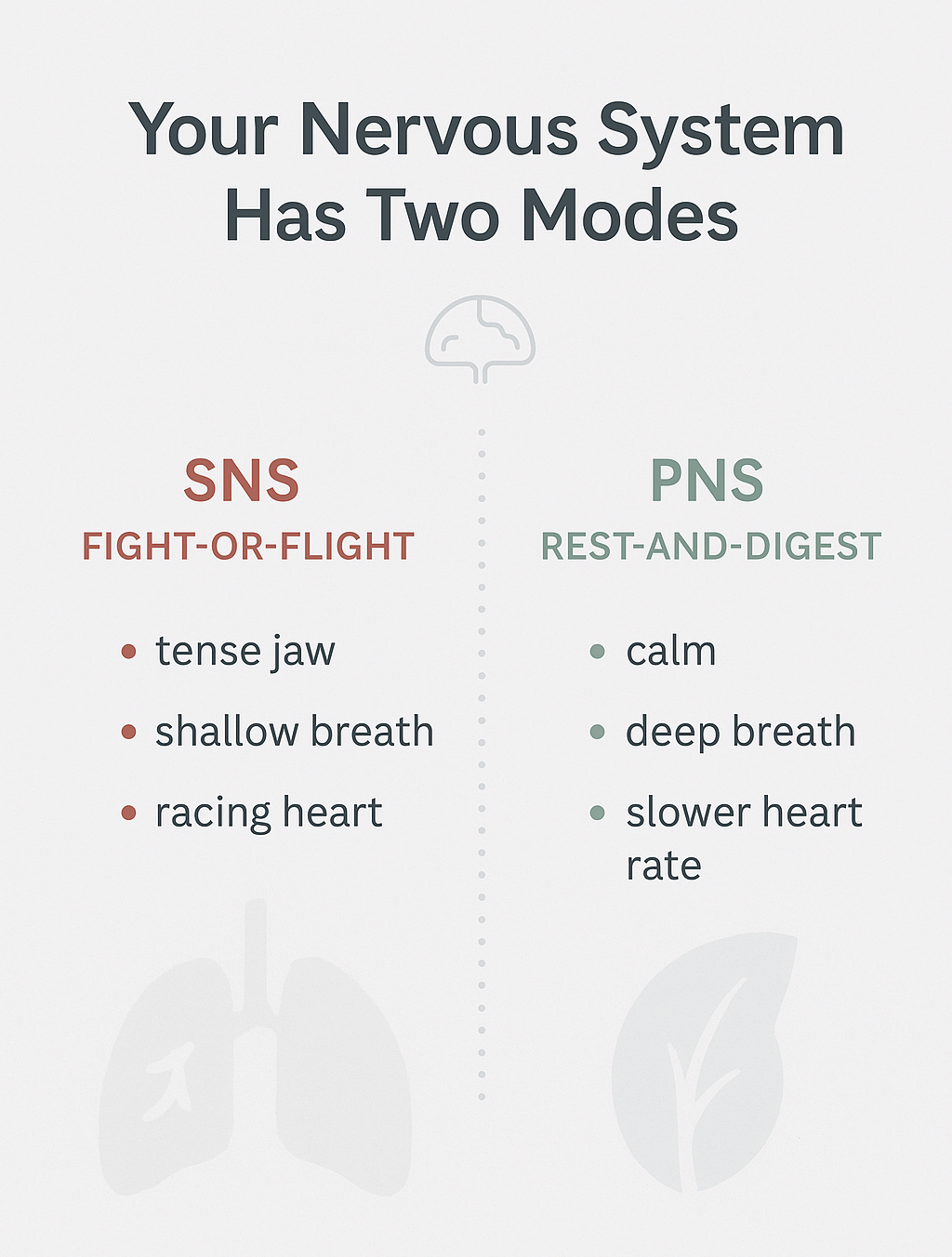
Signs You’re Stuck in Fight-or-Flight Mode
- Chronically low energy despite rest
- Trouble falling or staying asleep
- Jaw clenching, shallow breathing, high resting heart rate
- Low HRV (heart rate variability) on wearables (HRV is like a stress thermostat for your body—lower scores mean your system’s struggling to relax)
- Feeling emotionally reactive or disconnected
Backed by Science:
- Heart Rate Variability (HRV) measures nervous system balance. Lower HRV indicates higher stress and reduced recovery capacity. https://pmc.ncbi.nlm.nih.gov/articles/PMC5900369/
- Chronic stress can shift your nervous system toward sympathetic overdrive, impairing relaxation and recovery. https://www.health.harvard.edu/staying-healthy/understanding-the-stress-response
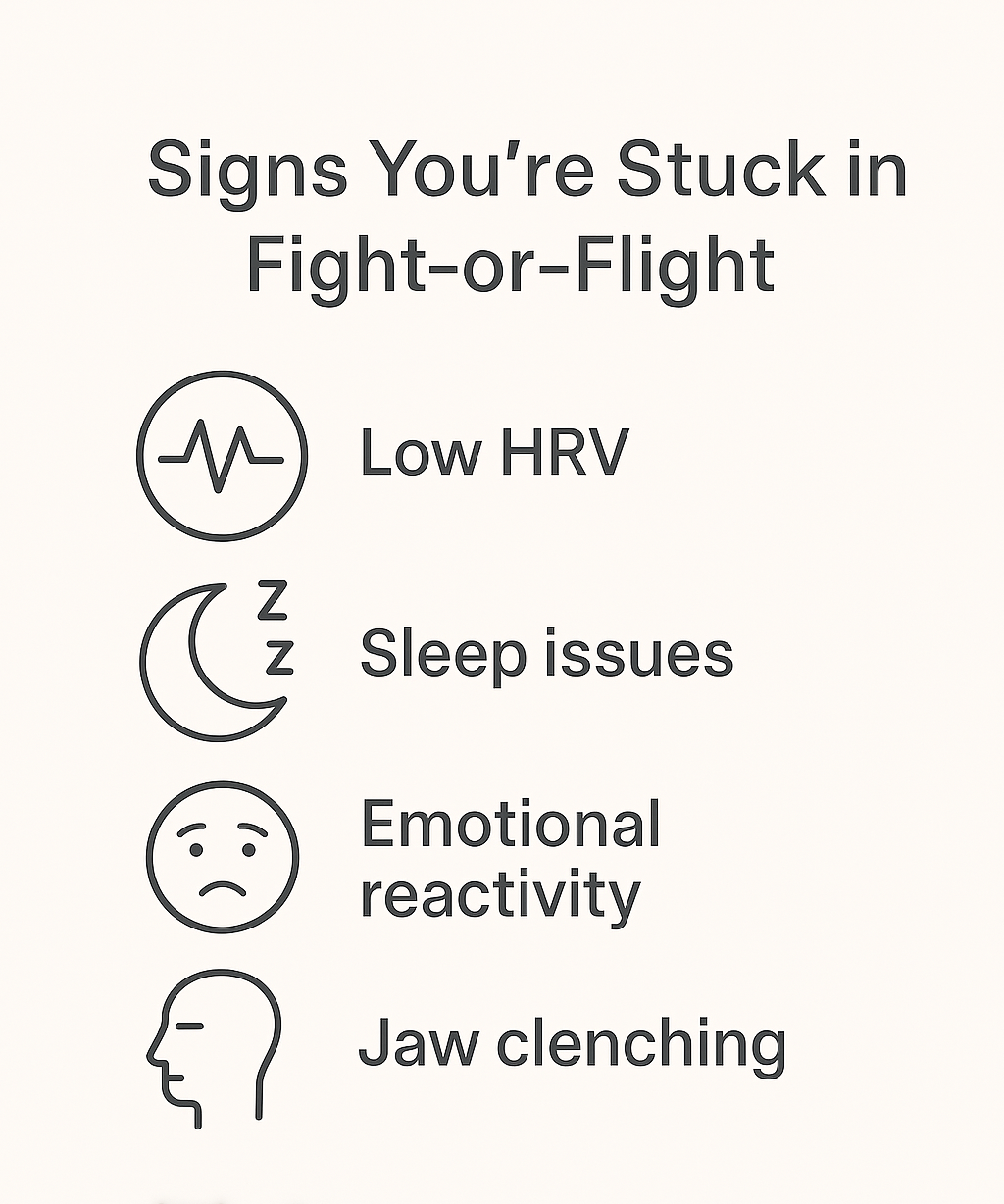
Breathwork: The Fastest Way to Switch Gears
Unlike digestion or blood pressure, your breath is under both automatic and conscious control. This makes it a direct tool to influence your nervous system.
Here’s how:
- Slow breathing activates baroreceptors—pressure sensors that help regulate your nervous system.
- General breathwork practices are known to enhance parasympathetic activity and HRV.
- Humming may stimulate the vagus nerve, a key pathway for parasympathetic activation — though more direct evidence in recovery contexts is still emerging.
"Breath is the remote control for your nervous system. Most people just never read the manual."
3 Breath Protocols to Try Tonight (With Evidence Notes)
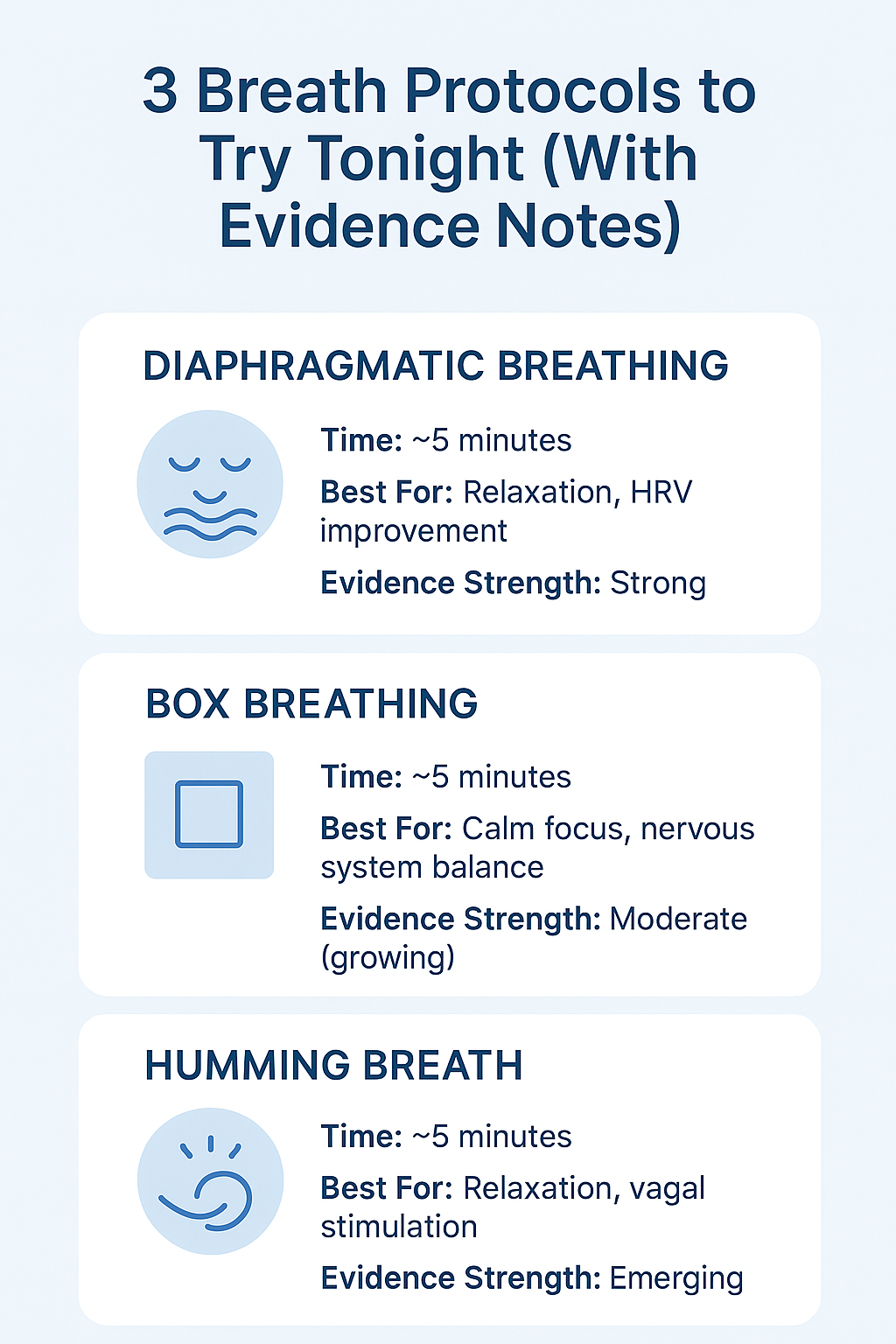
1. Diaphragmatic Breathing
Inhale deeply through your nose for 4 seconds, expanding your belly—not your chest. Exhale through your mouth for 2 seconds. Rest for 4 seconds. Repeat for 5 minutes.
- Encourages full oxygen exchange and relaxation
- Supported by research showing improvements in HRV and reduction in anxiety
Takeaway: Best for bedtime relaxation or post-stress recovery https://pmc.ncbi.nlm.nih.gov/articles/PMC5319881/
2. Box Breathing
Inhale for 4 — Hold for 4 — Exhale for 4 — Hold for 4. Repeat for 8 cycles.
- Widely used by athletes and in high-stress professions for emotional regulation
- Can support relaxation and nervous system awareness
Takeaway: Best for mental clarity and composure under pressure
Research shows that slow-paced breathing improves vagal tone and HRV. https://www.nature.com/articles/s41598-021-98736-9
3. Humming Breath
Inhale for 4 seconds, then hum on the exhale for as long as possible. Feel the vibration behind your nose or in your chest.
- May stimulate the vagus nerve
- Encourages slower breathing and increased interoception
Takeaway: Best for evening calm and enhancing vagal tone
Note: Humming has been observed to activate vagal pathways, though research specifically linking it to recovery markers is still growing. https://www.inc.com/wanda-thibodeaux/this-might-be-simplest-scientific-way-to-get-rid-of-stress-youve-ever-heard-of.html
Trauma-Informed Caution: When Breathwork Backfires
Some people feel worse with breathwork before they feel better. Why?
- Breath awareness can trigger anxiety or dissociation in trauma survivors
- The breath often holds traumatic patterns
Safer Strategies:
- Use titration: practice breathwork in small doses
- Focus on sensation (e.g., feet on the ground, chair pressure) rather than breath
- Try paced music or gentle rocking if breath focus feels overwhelming
"Start where your nervous system says yes—not where the internet says you should be."
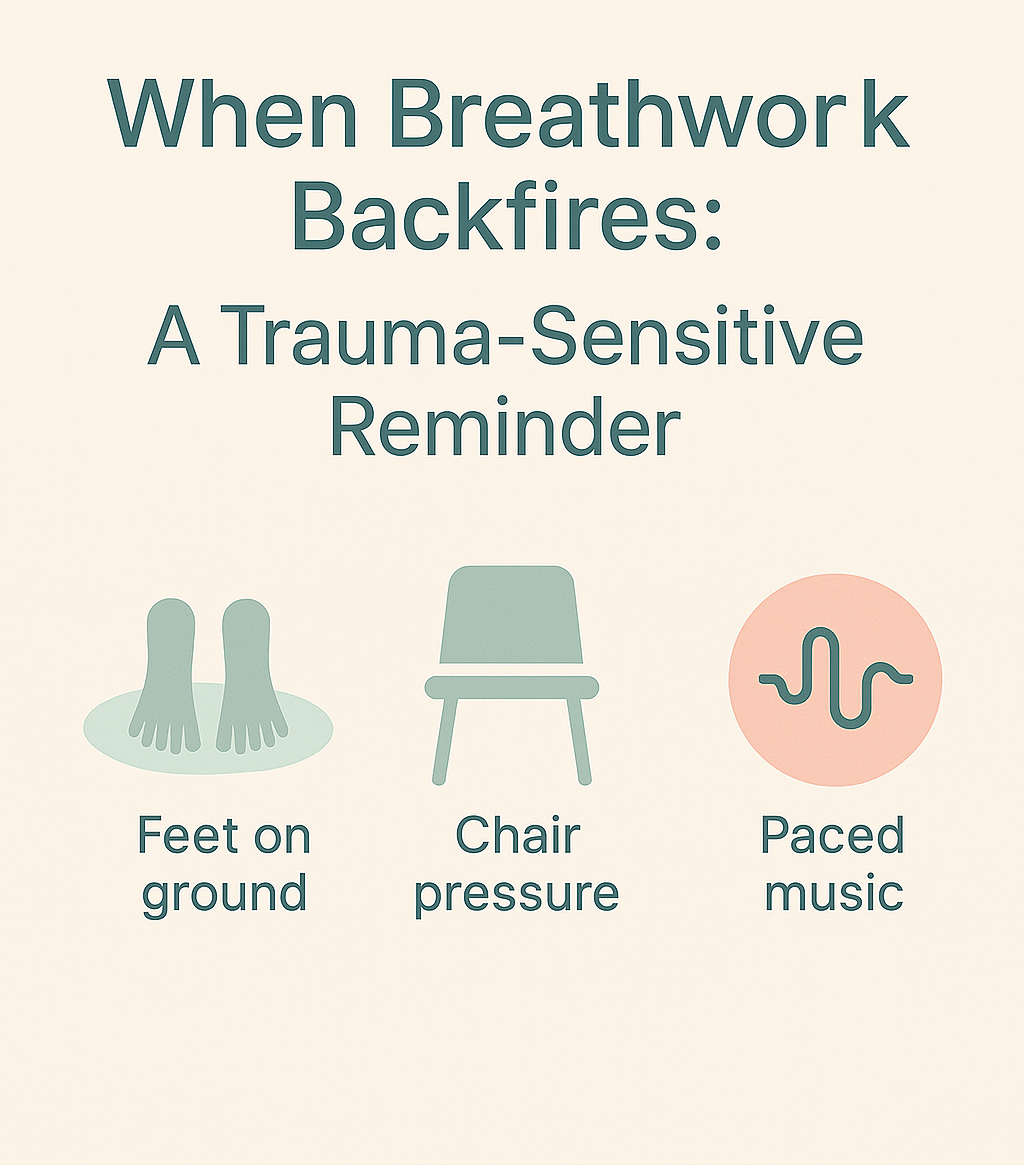
Why Parasympathetic Activation Is the Biohack Most People Miss
We spend our days stimulating, energizing, and optimizing. But the real leverage lies in learning to decelerate.
When you activate your parasympathetic system:
- HRV rises
- Sleep deepens
- Inflammation decreases
- Digestion improves
- Recovery accelerates
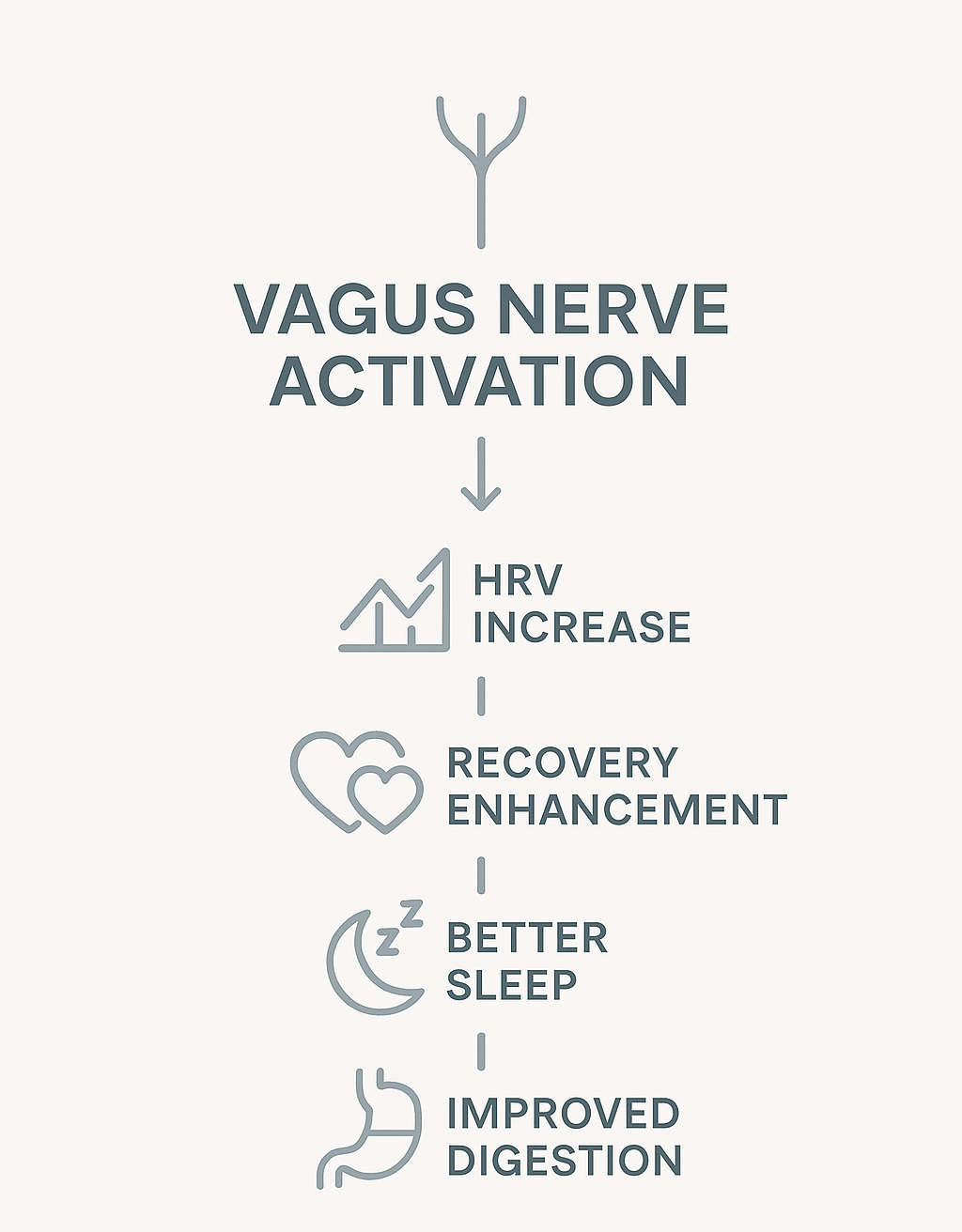
"Parasympathetic is the new performance."
Supported by evidence showing vagal tone is linked to recovery, inflammation, and stress resilience. https://www.massgeneral.org/news/article/vagus-nerve
You might feel calmer after one session, but HRV improvements often take weeks of consistent practice.
Final Thoughts: You’re Not Failing—You’re Just Frozen
If you’re doing all the “right” things but still not recovering, don’t push harder. Go inward. Start with breath.
Try diaphragmatic or humming breath tonight. Let your body rediscover calm. The rest will follow.
Want to measure your progress? Use HRV-tracking tools like the Oura Ring, Whoop, or Elite HRV app to monitor your recovery and improvement over time.
🔁 Deepen your practice:
Visit: Breathwork for Recovery: Unlocking the Power of Parasympathetic Activation
Or download our:
🔬 Featured Freebie:
Want a quick-start guide to reset your nervous system with breathwork?
Download The Parasympathetic Reset — it’s free!

